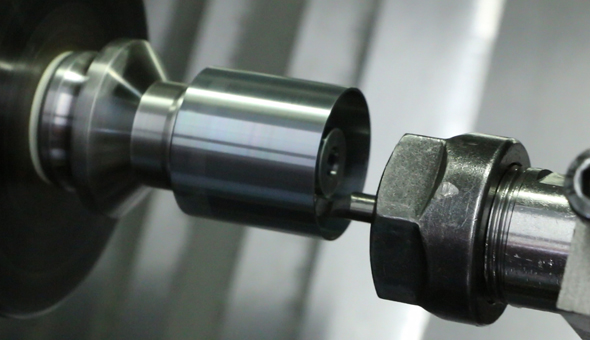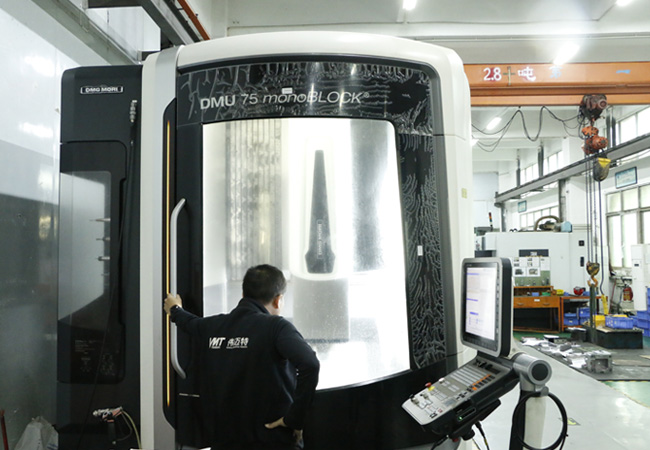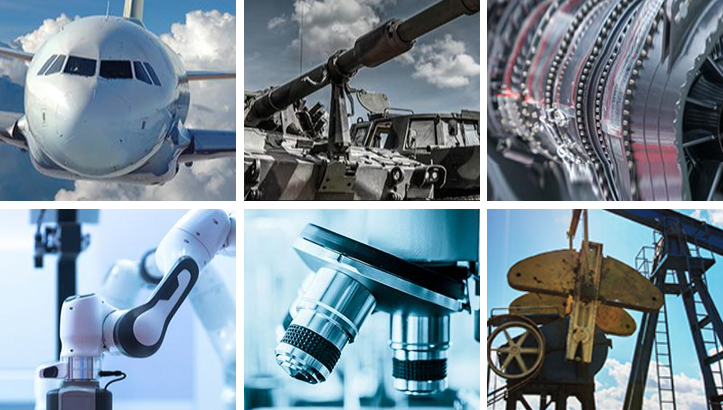VMT’s blogs aim to share our practical experience and knowledge accumulated during the manufacturing and product development process. Our goal is to use these articles to help you improve product design and increase your understanding of CNC machining, 3D printing, rapid prototyping, low-volume manufacturing, and surface treatment technologies. The information we provide is designed to provide actionable guidance and insights for your CNC machining projects.
A Guide to the Differences: CNC Lathes vs CNC Turning Centers
For newcomers in the manufacturing industry, it may be difficult to distinguish between CNC lathes and CNC turning centers because they are somewhat similar in appearance and function. Simply put, CNC lathes are modern digital versions of historic machine tools, while CNC turning centers are their more advanced and automated evolution. Understanding the difference between the two is crucial to choosing the right machining equipment because it can directly affect production costs, efficiency, and ease of operation.
This article will explore the differences between CNC lathes and CNC turning centers in depth to provide a reference for your machining decisions.
What is a CNC Lathe?
CNC lathe is a high-precision, automated machine tool that uses a preset computer numerical control program to drive the spindle, tool holder and other components to work, thereby achieving precise turning, drilling and boring of workpieces. This machine tool combines multiple technologies such as mechanical, electrical, and hydraulic, and has been widely used in the fields of automotive parts, precision mechanical parts, etc. due to its high efficiency and stability.
What is a CNC Turning Center?
The CNC turning center is a machine tool that integrates multiple machining functions. It retains the turning function of the traditional lathe, and adds milling, drilling, boring and other capabilities on this basis, as well as optional sub-spindle configuration, enabling it to handle more complex and multi-faceted parts machining tasks. Compared with CNC lathes, CNC turning centers have significantly improved their processing capabilities and automation levels.
Types of CNC Lathes and CNC Turning Centers
Types of CNC Lathes
Flat Bed CNC Lathe
Flatbed CNC lathes are suitable for heavy-duty and high-stability machining tasks. Their stable bed design helps achieve high-precision machining, especially for machining large or complex geometric workpieces. However, due to their structural characteristics, the tool change process may be relatively slow.
Slant Bed CNC Lathe
Slant bed CNC lathes are known for their fast movement and flexibility and are suitable for machining medium-sized workpieces. Its multi-station turret design improves the efficiency of tool switching and helps shorten production cycles. At the same time, the slant bed structure also enhances the rigidity and stability of the machine tool.
Vertical CNC Lathe
The vertical CNC lathe has a vertical spindle arrangement, which is particularly suitable for processing heavy and large workpieces. The workpiece is placed vertically and fixed by gravity, which reduces the use of fixtures and improves machining efficiency. It can also adapt to workpieces of different lengths and is ideal for processing large parts.
Types of CNC Turning Centers
Three-axis CNC turning center: usually has three axes of linear motion in different directions, such as X-axis (left and right), Y-axis (front and back) and Z-axis (up and down). It is suitable for processing some disc-like parts, but there are limitations when it comes to parts that need to have holes or grooves processed on multiple faces.
Four-axis CNC turning center: Add a rotating axis on the basis of three axes, generally 360° rotation on the horizontal plane, but not high-speed rotation. Suitable for processing some box-type parts, and most four-axis CNC machine tools also allow workpiece rotation (b-axis), so it can act as both a milling machine and a lathe, suitable for processing needs such as drilling on the side of the part or the cylindrical surface.
Five-axis CNC turning center: Adds a rotating axis to the four-axis, usually a 360° rotation of the vertical surface, which can achieve comprehensive processing and complete the processing of multiple surfaces in one clamping, reducing clamping costs and product damage. It is suitable for manufacturing complex precision parts such as artificial prostheses, aerospace components, etc.
The difference between CNC lathe and CNC Turning Center
| CNC Lathe | CNC Turning Center | |
| Basic Definition | A machine tool that uses digital control technology to control tool position and speed, and mainly performs rotary cutting machining. | A machine tool based on a lathe that adds milling, drilling and other functions and can operate in multiple axes. |
| Number of axes | It usually has three axes: X, Y, and Z (some may only have two axes), and mainly performs linear motion. | It has at least four axes or more, including a rotary axis, and is capable of complex multi-faceted machining. |
| Processing Capabilities | Good at machining rotationally symmetrical parts, such as shafts, gears, etc. | Capable of complex multi-faceted, multi-process machining, including drilling, milling, etc. |
| Processing accuracy | It has high precision, but is limited to its single or limited number of axes, which has certain restrictions on the processing of complex shapes. | Higher precision, able to handle more complex and sophisticated machining requirements. |
| Production efficiency | Higher, suitable for small and medium batch production. | Higher, multiple surfaces can be processed in one clamping, reducing tool change and clamping time. |
| Degree of automation | Higher, but requires manual tool changing and clamping. | Higher, often equipped with automatic tool changing system to reduce manual intervention. |
| Cost and investment | Relatively low, suitable for the initial investment of small and medium-sized enterprises. | It is relatively high and is suitable for large enterprises or high-end manufacturing fields that require high-precision and high-efficiency machining. |
Advantages of CNC Turning Centers Over CNC Lathes
Stronger Machining Capabilities:
The CNC turning center not only retains the rotary cutting function of the lathe, but also enables it to handle more complex, multi-faceted and delicate parts processing tasks by adding additional axes and integrating more machining functions.
Higher Machining Accuracy:
The advanced control system and more axis configuration of the CNC turning center enable it to perform machining tasks with higher precision and meet the application scenarios with extremely high precision requirements. In addition, the repeated positioning accuracy of the CNC turning center is also extremely stable, ensuring that each machined part can achieve consistently high-quality standards.
Higher Production Efficiency:
Production efficiency is another major advantage of CNC turning centers over CNC lathes. By reducing the number of clamping times and tool change time, CNC turning centers can complete more machining tasks in a shorter time. Its highly automated features, such as the automatic tool change system, further reduce manual intervention and improve the smoothness and efficiency of the production process.
Better Flexibility:
The CNC turning center integrates multiple machining functions in one, and can flexibly respond to different machining requirements. Whether it is a simple rotationally symmetrical part or a complex multi-faceted, multi-process part, the CNC turning center can adapt by adjusting the program and tool to ensure the smooth completion of the machining task.
Reduce Costs:
The highly automated nature of CNC turning centers reduces the need for manual operation, thereby reducing labor costs. At the same time, by precisely controlling the machining process, CNC turning centers can reduce material waste, improve material utilization, and further reduce production costs.
Industrial Applications of CNC Lathes and Turning Centers.
CNC lathes and turning centers are the basic forces in modern manufacturing, and they each play their own expertise and complement each other.
Auto Industry:
In the automobile manufacturing process, CNC lathes are responsible for machining rotationally symmetrical parts such as shafts and discs, ensuring the dimensional accuracy and surface quality of these parts. Turning centers, with their multi-axis machining capabilities, handle more complex engine parts and transmission system components.
Aerospace:
In the field of aerospace, the precision and performance requirements of parts are extremely high. CNC lathes are used to process precision bearings, gears and other transmission components, while turning centers are good at machining complex polyhedral structures such as engine housings and landing gear parts.
Medical Devices:
Medical devices have strict requirements for precision and biocompatibility. CNC lathes and turning centers are involved in the manufacturing process. From tiny dental implants to complex artificial joints, their high-precision machining capabilities are needed to ensure the accuracy and safety of medical devices.
Mold and Energy:
In mold manufacturing and the oil and gas industry, CNC lathes and turning centers also play an important role. They can machine complex mold cavities and key components of energy equipment, such as drills and valves, improving production efficiency and product quality.
CNC Turning Center or CNC Lathe: Which is Right for Your Project?
When choosing a CNC turning center or CNC lathe, you should first clarify the specific needs of the project, including the shape, size, and precision requirements of the parts, and then determine the type and configuration of the required machine tool based on this. At the same time, the hardness and cutting performance of the machined material must be considered to match the appropriate machine tool and tool. The scale of production is also a key factor. For large-scale production, you can consider configuring multiple machine tools to improve efficiency. However, you also need to fully measure the purchase, operation, and maintenance costs of the machine tools to ensure that all decisions are within the project budget.
VMT has more than 13 years of experience in aluminum alloy CNC machining and manufacturing, equipped with 66 3- to 5-axis CNC machine tools, 30 CNC machine tools and 20 automatic lathes. We specialize in precision machining from prototype design to mass production, and are good at handling complex geometries and high-demand products. By choosing VMT as a partner, you will receive high-quality products and satisfactory customer service.
Frequently Asked Questions About CNC Lathes and CNC Turning Centers
What Is The Best CNC Lathe?
When choosing a CNC lathe, it is important to consider project requirements, processing materials, production scale and budget. Well-known brands such as Mazak and DMG MORI provide machine tools of different models and configurations, each with its own advantages. The best choice should be based on actual needs, balancing performance, cost and after-sales service. There is no need to pursue the “best”, but to find the CNC lathe that best suits your production needs.
Materials for CNC Lathes and Turning Centres.
CNC lathes and turning centers can process a variety of materials, including aluminum, stainless steel, carbon steel, brass and other metals, which are used in different fields due to their respective characteristics such as weight, strength and corrosion resistance. At the same time, they can also process plastics and composite materials, such as POM, nylon, etc., which are used in electrical, medical and other fields due to their light weight, corrosion resistance or insulation properties. When selecting materials, physical properties, processing difficulty, cost and end use must be considered to ensure processing quality and efficiency.






